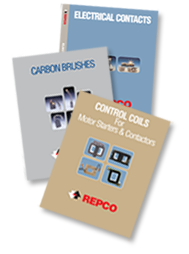
- Electrical Contacts
- Carbon Brushes
Carbon Brushes : Brush Reference
- Control Coils
Control Coils
- Other Contactor Parts
- More
- Search
- Auxiliary Contacts
Auxiliary Contacts
- Shunts
Shunts
- Springs
Springs
- ContactorsDC
ContactorsDC
- Fuses
By: David Howard | G+
The ups and downs of escalators
Escalators are found in most modern facilities where a volume of people need to move up or down continuously and conveniently. Department stores, airports, office buildings, subway stations, arenas and stadiums all utilize escalators to direct the flow of pedestrian traffic when elevators would simply be impractical.
While many moving stairs and conveyor style systems were patented in the late 1800s, they remained mostly theoretical, prototypes, or speculative installations. The first escalator, generally credited to Charles D. Seeberger of the Otis Elevator Co., debuted at the Paris Exhibition in 1900. Otis Elevator continued to make improvements, trademarked the name “escalator”, and began selling and installing escalators commercially. Other manufacturers also produced their own moving staircases, including Kone, Schindler, and ThyssenKrupp - all of which are now competitors of Otis.Smooth, silent operation, reliability, and safety
Modern escalators operate indoors and outdoors and are available in a wide array of sizes, spans, and designs. Still, traditional components remain consistent, even across manufacturers - such as the typical 30-degree incline, step height, and ranges of speed during operation.
Safety and reliable operation are a primary concern anywhere an escalator is installed. New escalator and retrofit versions include many safety features absent in older types. Manual and automatic emergency shut-off switches and modern system diagnostic monitoring have greatly reduced the risk of injury and downtime.Keeping escalators moving
Escalators are relatively simple mechanical devices complicated only by their restricted space and long periods of operation. A standard motor, sized to match the escalator, powers a chain that moves the steps along a track in a continuous motion. Handrails are also generally powered by the same motor via a connected pulley system.
Most escalators include electro-magnetic overload devices that are triggered by tread or motor impairment, stress, or emergency cut-off switches. Additionally, in the power control panel, usually near or adjacent to the escalator, the main power switch, additional motor protection, and control devices are also usually wired according to manufacturers specifications and NEMA-ratings.
Repco stocks replacement electrical contacts compatible with OEM contactors typically found in escalator motor control systems and in the power control apparatus. Our replacement electrical contacts offer an affordable and comparable option to OEM or manufacturer parts for maintenance and repair.
1Do not despond! More cheerfully!10/25/2022 6:57:09 PM
~ promoTut
Leave A Comment Now
Literature Request Or Download
Request our Electrical Contact, Carbon Brush, or Control Coil catalogs. Or download PDFs or browse them online.
Choose

Repco
100 Sonwil Drive
Buffalo NY 14225 - Control Coils